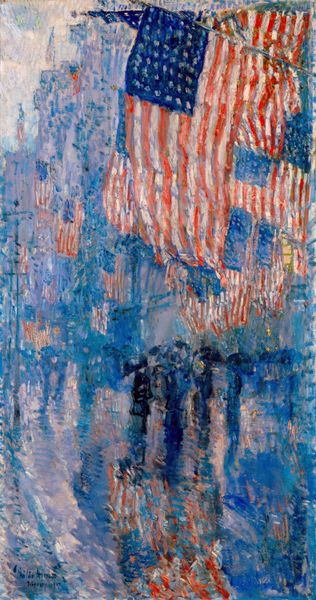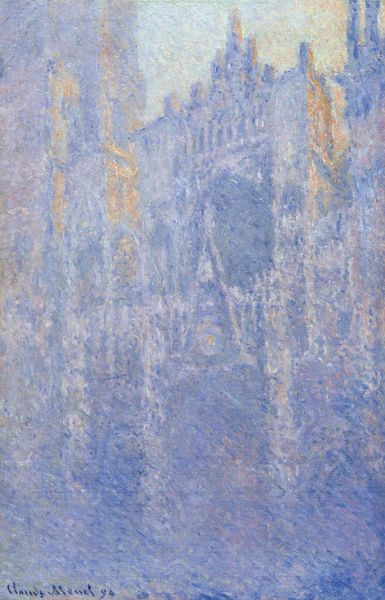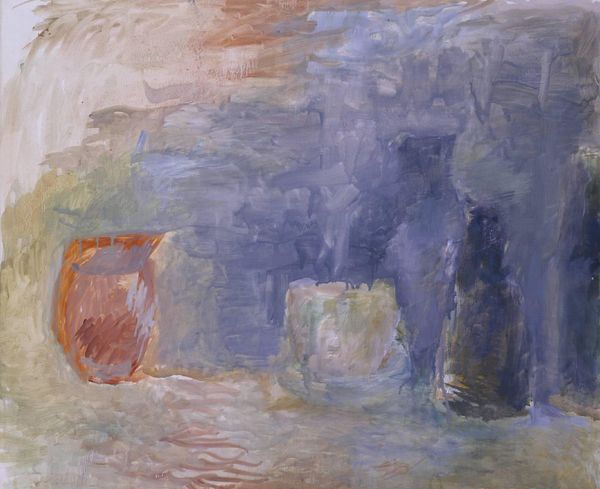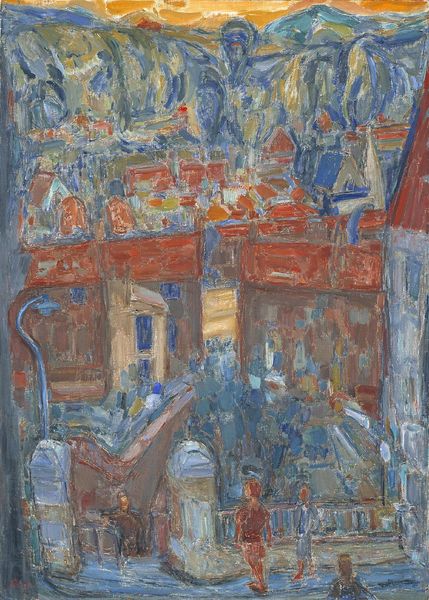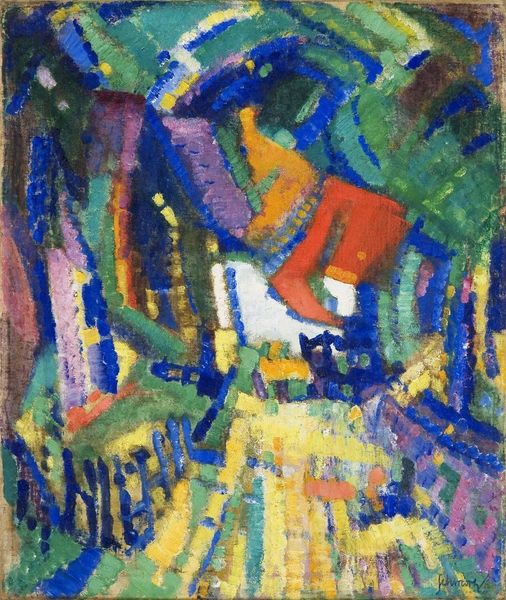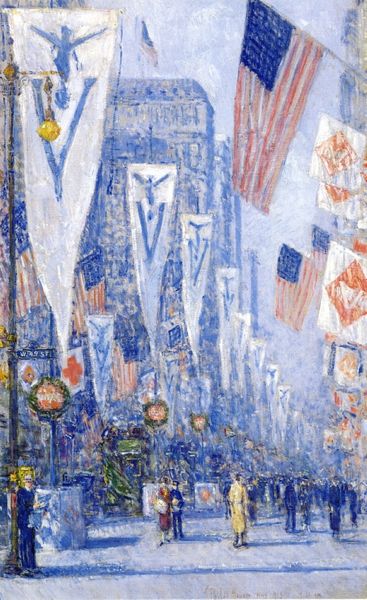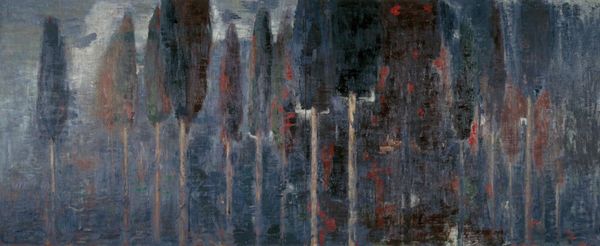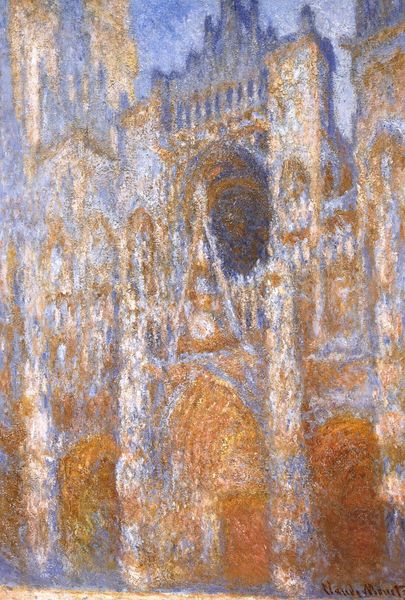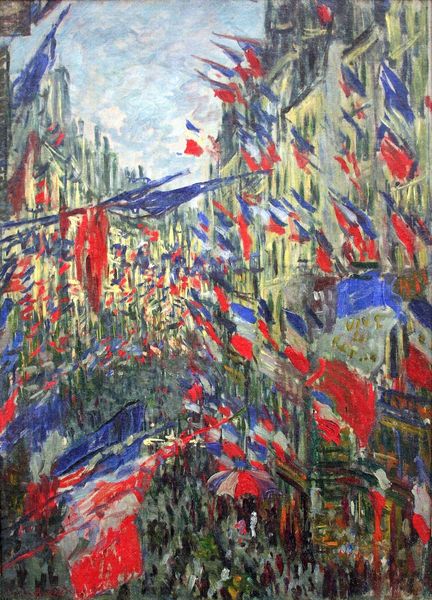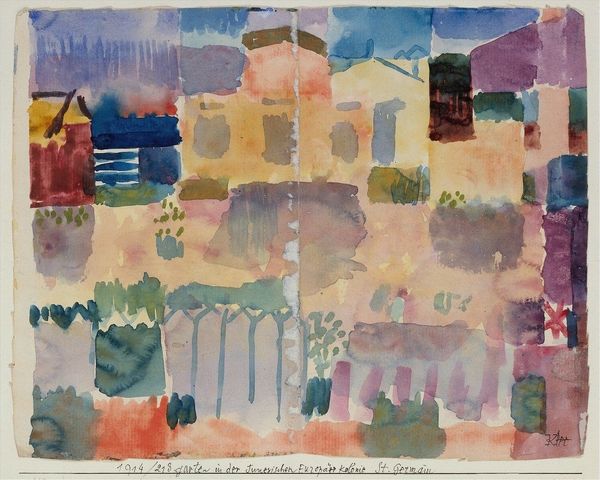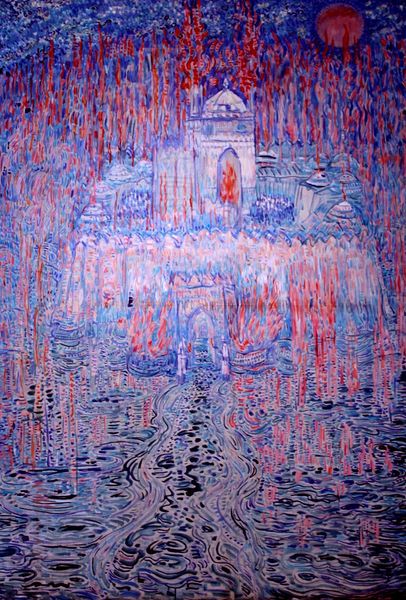
Copyright: Public domain
Curator: Childe Hassam, an American Impressionist painter, created this piece, "Avenue of the Allies," in 1918. It is rendered with oil paints. Editor: At first glance, the scene is intensely patriotic but also rather melancholic. The city feels blurry and indistinct, almost ghostlike, despite the celebratory display of flags. Curator: Hassam created this series to capture the atmosphere in New York City during World War I, reflecting a potent mix of fervent patriotism and wartime anxiety. The flags of Allied nations create a vibrant spectacle. But let's not forget the underlying political tensions and the wave of xenophobia sweeping the US at the time. Editor: The flags! Absolutely—they speak volumes. Note how the color palette uses mainly blues, reds and whites—the French flag predominates near the center, drawing the eye, while the others recede in the pictorial space. Beyond that, each flag serves as a symbol of its nation’s history, sacrifice, and ideals during the war. One wonders, however, about their intended effects on the viewers during the era. Curator: This artwork encourages us to reflect on the cost of war, even within celebratory displays of patriotism. Considering how Hassam represents New York society amidst a world war, we cannot separate aesthetics from a web of socio-political complexities. Editor: Yes. The symbolism is deeply embedded within these Impressionist brushstrokes, which almost feel like fragments of memory themselves. The flags almost appear weathered or ethereal, suggesting not only an optimistic present but also the weight of historical continuity. Curator: Placing Hassam's artistic style within broader discourses helps expose not just the what of his paintings, but also the why and the how they connect to histories of war, nationalism, and social divisions. Editor: Indeed. These symbols can connect us to both collective hope and individual reflection. There's something hauntingly universal in this image—beyond its nationalistic features. Curator: Thank you for pointing out its subtleties! This discussion helped me understand better how symbols gain emotional value. Editor: The pleasure was all mine. Engaging in this allowed me to consider how visual imageries resonate—or even clash—across time.
Comments
No comments
Be the first to comment and join the conversation on the ultimate creative platform.
